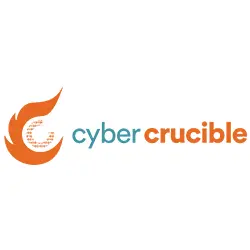Intro

Imagine your organization’s cybersecurity strategy as a medieval castle. Traditional approaches focus on building thicker walls (firewalls) and sharper moats (network segmentation), but modern attackers don’t bother with the front gate. They tunnel underground (zero-day exploits), impersonate merchants (phishing), or exploit forgotten cellar doors (shadow IT). This is why proactive cybersecurity—like a living immune system that adapts to new pathogens—has become essential.
By 2026, organizations adopting frameworks like Continuous Threat Exposure Management (CTEM) will be three times less likely to suffer breaches compared to reactive models. Let’s explore why the industry is shifting from "burglar alarms" to "predictive epidemiology.
The Problem with Traditional Cybersecurity:
.jpeg?access_token=daa3edf0-f1c2-4a4a-98ef-31fa7e7fadfa)
Chasing Ghosts in a Hall of Mirrors
Traditional cybersecurity operates like a weather forecast that only reports yesterday’s storms. It relies on three flawed assumptions:
1. The "Known-Knowns" Fallacy
Most tools target recognized vulnerabilities (CVEs) and malware signatures—akin to diagnosing illnesses solely by textbook symptoms. This fails against novel attack vectors like AI-driven social engineering or cloud misconfigurations, which account for 48% of 2024 breaches. As Gartner notes, "Exposure extends far beyond vulnerabilities", including weak credentials, improper access controls, and API endpoints left like unlocked windows in a high-crime neighborhood.
2. The Compliance Mirage
Many organizations treat cybersecurity as a checkbox exercise—passing audits with periodic penetration tests and vulnerability scans. This creates a false sense of security, similar to a restaurant acing health inspections but ignoring daily fridge temperature checks. Forrester reveals that 67% of breached companies in 2024 were PCI-DSS compliant, proving certifications ≠ resilience[.
3. The Alert Fatigue Spiral
SOC teams drown in 11,000+ daily alerts on average, with 68% being false positives. It’s like searching for a needle in a haystack while someone keeps adding hay. Traditional tools lack context to prioritize risks, leading to critical threats like privilege escalation paths being buried under trivial alerts.
The Rise of Continuous Threat Exposure Management (CTEM):

CTEM, coined by Gartner in 2022, acts as a 24/7 cyber epidemiology program. Instead of waiting for outbreaks, it continuously maps:
- Infection vectors (attack paths)
- Susceptible populations (critical assets)
- Mutation risks (emerging TTPs)
How CTEM Works: The Five-Stage Immune Response
.png)
- Scoping:
Identify critical assets—your organization’s "vital organs." A hospital might prioritize patient databases over cafeteria POS systems, while a manufacturer focuses on ICS/SCADA systems. - Discovery:
Continuously scan for vulnerabilities, misconfigurations, and attack paths—not just individual flaws. Imagine finding not just an unlocked door (CVE) but realizing it connects to the CEO’s office via a stairwell (Active Directory misconfiguration). - Prioritization:
Use attack graph analysis to weigh risks. A CVSS 10 vulnerability on a disconnected printer matters less than a CVSS 6 flaw on a domain controller. XM Cyber found that 82% of "critical" CVEs are unexploitable in context, while 23% of medium flaws enable ransomware. - Validation:
Simulate attacks to confirm exploitability. Traditional tools might flag a theoretical SQLi vulnerability, but CTEM tools like XM Cyber test whether firewalls or WAFs actually block it. - Mobilization:
Automate patches, reconfigure access controls, and update playbooks. This phase closes the loop, ensuring fixes don’t inadvertently expose new attack surfaces.
How TRaViS ASM Provides Actionable Security Insights:

Platforms like TRaViS ASM act as the cerebral cortex of CTEM, integrating three key functions:
1. Asset Discovery: Mapping the Digital Nervous System
Traditional asset inventories become outdated within hours in cloud-native environments. TRaViS uses API-driven topology mapping to track assets in real time, including:
- Shadow IT (e.g., unauthorized SaaS apps)
- Ephemeral cloud instances (AWS Lambda, Kubernetes pods)
- Third-party exposures (vendor API keys, shared databases)
2. Dark Web Monitoring: Eavesdropping on the Adversary’s Whisper Network
Like a spy listening in on enemy communications, TRaViS scans dark web forums and Telegram channels for:
- Stolen credentials (e.g., "CompanyX_ADMIN_2024")
- Exploit kit updates (e.g., new MOVEit vulnerabilities)
- Insider threat chatter ("Looking for AWS root access")
3. Risk Prioritization: The Eisenhower Matrix for Cybersecurity
TRaViS employs AI-driven criticality scoring that considers:
- Business impact (e.g., revenue loss per hour of downtime)
- Threat likelihood (e.g., Log4j vs. a niche ICS exploit)
- Remediation complexity (patching a legacy OT system vs. a cloud VM)
This transforms raw data into a prioritized "repair list," much like a surgeon triaging patients by urgency.
The Future of Cybersecurity: From Autopilots to Autonomous Immunity

Gartner predicts that by 2027, 50% of CTEM programs will leverage AI for predictive threat modeling—but with caveats.
The AI Paradox: Smarter Defense, Smarter Offense
- Defenders use AI to:
- Predict attack paths via graph neural networks
- Generate synthetic threat scenarios (e.g., "Simulate a Russian APT targeting our Azure AD")
- Automate patch testing in sandboxed environments
- Attackers counter with:
- AI-generated phishing (deepfake CFO voice clones)
- Adversarial ML to bypass anomaly detection
- Polymorphic malware that mutates faster than signatures update
The Human Firewall 2.0
CTEM doesn’t eliminate humans—it empowers them. Security teams evolve from "alert janitors" to cyber epidemiologists, focusing on:
- Behavioral base lining (Spotting anomalies in MFA usage patterns)
- Threat hunting (Probing for dormant Cobalt Strike beacons)
- Boardroom storytelling (Translating "CVE-2025-1234" into "$12M ransomware risk")
Building a Living Defense
Adopting CTEM is like replacing your home’s deadbolt locks with a smart security ecosystem—one that learns where you hide spare keys, monitors neighborhood crime trends, and reinforces weak points before burglars strike. In an era where 68% of breaches exploit assets teams didn’t know existed, proactive cybersecurity isn’t optional—it’s the digital equivalent of evolutionary survival.
The future belongs to organizations that stop playing whack-a-mole with threats and start building self-healing networks. After all, in nature, the species that survive aren’t the strongest, but the most adaptable.
Book a free consultation today!











